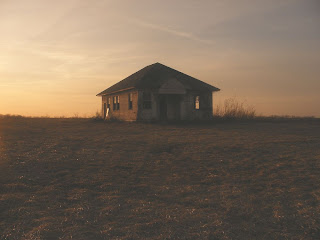Though the techniques and attitudes of the Navajo shaman and the typical American physician differ greatly, both traditions are steeped in ritual and personify unique cultural beliefs about health, healing, and illness. By examining the two systems side by side I hope to illustrate how they can coexist and how together they work to meet the diverse needs of American medical patients.
In 2000 about 11.6 million people were employed as nurses, physicians, pharmacists, and in a multitude of other professions associated with the 1.3 trillion dollar a year medical industry (Jonas 7-8). Given these numbers, generalizations about a physician’s philosophy are difficult to make. Modern healers are as diverse as their patients. However, the Medical Practice Act of New York State testifies that, “the practice of the profession of medicine is…diagnosing, treating, operating or prescribing for any human disease, pain, injury, deformity or physical condition” (Jonas 28). This definition illustrates the primary focus of the American physician on the treatment of symptoms. There is no mention of the patient or of preventive care. Instead, the Act offers a list of human frailties and the skills a physician possess to cure them.

The Navajo healer’s world-view, by contrast, is one of “good hope”, one that connects land and its inhabitants in a timeless, spiritual reality. Illness is perceived as the price of breaking natural laws. Therefore the shaman, gifted his or her healing powers by holy spirits, must treat the cause, not the symptom of illness. Rituals are used to bring a patient back into alignment with their planet, community, and spiritual and physical self. In the sand painting ritual, the chanting shaman creates an image whose shape and colors are used to interpret the patient’s illness (Spector 219-221).
Lori Arviso Alvord, a Navajo surgeon and teacher at Dartmouth-Hitchcock Medical Center, remembers the winter night an entire tribe danced and chanted for an ill woman. She explains that, "The latest breakthroughs in research and methodology are stunning achievements and should be recognized as such, but along the way we have forgotten some of the things that heal us best--our relationships, how we live our lives, our feelings of wholeness and belonging" (Mangan A12). For Alvord and her shamanic predecessors healing is a natural, continual process, and one that is compatible with modern medicine.
In fact modern medicine possesses many of the same characteristics as native traditions. M.L. Elks of the Morehouse School of Medicine in Atlanta draws this thoughtful analogy between the work of the physician and that of the shamanic healer:
Traditional healers often have required the patient to confess misdeeds, wear special garments, and perform certain tasks, while the healer might touch the patient with stylized gestures or interpret various physical signs. In modern medicine, the doctor takes the patient's history, or "confession." During an examination, the patient wears a paper drape, and the doctor often touches the patient's body with a stethoscope and other instruments. Later, the doctor interprets the results of laboratory tests and requires the patient to take certain actions, such as exercising, dieting, or swallowing pills.
The paradox of modern medicine is that the work of the physician is not considered sacred, but his or her decisions are still sacrosanct and wrapped in ritualistic mystery. Patients repeat the physician’s diagnosis to friends and family, often without fully understanding their meaning. The patient begins taking medications with unpronounceable names, sometimes without even seeing the prescription.
Patients, more than physicians, seem to recognize the similarities between modern and ancient medicine and understand the need to unify the two traditions in a healer who is skilled in treating disease, but also sensitive to spiritual and emotional needs. According to a study conducted by David Larson, M.D, president of the National Institute for Healthcare Research, nearly forty percent of the population wishes their doctor would pray with them, and sixty percent are interested in discussing their spirituality with their doctor (Marty). It seems clear that spirituality connectivity is an important issue for patients and one that should not continue to be neglected.
The intuitive rituals of the Navajo shaman, and other faith-based healing traditions, are a reminder that there is more to illness than its physical side effects and more to the healer than certification or superior knowledge. Treatment is an exchange between patient and physician and it takes place within a shared reality, shaped by cultural tradition and world view. Though the modern American medical system has focused primarily on the tradition of science, ritualistic practices still exist and patients still desire to have their spiritual needs recognized. The shift toward a more pluralistic health care system is to acknowledge the diverse and ever changing needs of patients and to begin the complex work of healing.
Elks, M.L. “The Key Role of Ritual in Modern Medicine.” Bulletin. Aug 1998. 24 Apr
2007. http://www.parkridgecenter.org/Page117.html.
Jonas, Steven. An Introduction to the U.S. Health Care System. New York: Springer
Publishing, 2003.
Mangan, Katherine S. “Enlisting the Spirit in Medical Treatment.” Chronicle of Higher Education. 45:42 (1999): A12.
Marty, Martin E. “Is Anybody Out There Listening?” Bulletin. Nov 1997. 24 Apr
2007. http://www.parkridgecenter.org/Page449.html.
Spector, Rachel E. Cultural Diversity in Health and Illness. Stamford: Appleton & Lange, 1996.























































